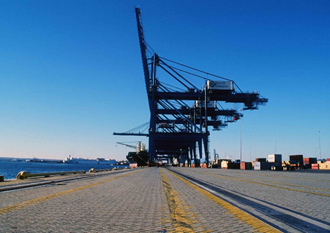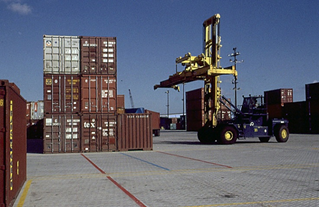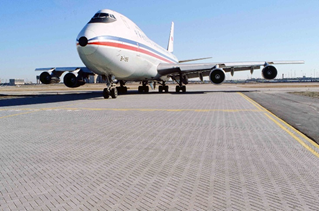We've Only Just Begun
By David Smith, ICPI Technical Director
With due respect to the title of Karen Carpenter’s 1970 classic song, the segmental concrete paver industry is still nascent in 2019. The song’s timing coincides with the first concrete paver project in North America, about one million sf installed on Roosevelt Island, a two-mile long rock situated in the East River next to Manhattan. The project used concrete pavers in a street designed for mostly pedestrian use and electric buses. The z-paver was used, manufactured in New Jersey by a German entrepreneur named Josef Peitz. His effort didn’t result in a permanent concrete paver plant there. The paver production machine was sold after the pavers were shipped to New York City.
Street Z-Pavers On Roosevelt Island,
New York in 1969
In the meantime, the first permanent concrete paver plants were emerging in Ontario, Canada. From 1973 to 1990, the U.S. and Canadian paver industry grew to a few dozen manufacturers selling landmark municipal, commercial, industrial and port projects. Some compensation is presented via a partial list of projects built during those twenty-plus years.
1982 – Pier IX (formerly Massey Coal Terminal) Newport News, Virginia
610,000 sf subjected to huge coal pules (for steel making) readied by big bulldozers for loading onto collier ships bound for Europe or elsewhere.
1983 – North Bay, Ontario
150,000 sf of streets and sidewalks
1986 – Canadian Pacific Railroad Intermodal Terminal, Edmonton, Alberta
164,000 sf in container handling areas. This grew to about 1 million sf.
Left: 1989 – San Antonio, Texas – 1,000,000 sf of streets and sidewalks. Right: 1989 – Port of Baltimore, Maryland – Seagirt Terminal 230,000 sf in container handling areas. This grew to about 2 million sf in various places around the port
Left: 1991 – Port of New Orleans, Louisiana – container handling areas, grew to 1 million sf by 1996, then higher. Right: 1991 – Dallas-Fort Worth International Airport, Texas – 261,000 sf for three cross taxiways
1992 – Northeast Florida Regional Airport, St. Augustine
50,000 sf general aviation aircraft parking
1993 – Port of Oakland, California
Berth 30 saw 330,000 sf in container handling and chassis operation areas. This installation set the stage for 5 million sf placed from 2002-2004 in Berths 55-59 and in other berths. This installation is the largest in the Western Hemisphere
1994 – Port of Tampa, Florida
Berth 208 used 788,000 sf placed over several years that supports storage areas for rolled sheet steel and flat stock
In 1990, the paver industry united under the aegis of the National Concrete Masonry Association based in Herndon, Virginia. The group was dubbed The Concrete Paver Institute. In 1993, it left and formed the Interlocking Concrete Pavement Institute based in nearby Sterling. The first year’s budget was about $510,000 with 66 charter members. Now based in Chantilly, Virginia, in owner-occupied offices, membership is about 1,200 with a budget of $3.8 million.
Segmental paving is a centuries-old pavement. Given its age and ubiquitous use, you might expect pavement organizations supporting it. That’s obviously not the case. In North America, other pavement industries and their associations got a head start. This happened because pavements in the New World went from dirt to asphalt and concrete pavements to create smooth surfaces for vehicles. While there was a brief showing of clay brick pavers in center cities, there was no centuries-old tradition of using segmental paving like Europe and Asia translated into modern and large interlocking concrete pavement markets today.
Compared to the industry associations, the Interlocking Concrete Pavement Institute (ICPI) has been in business for a short of 25 years. While looking back and celebrating growth, ICPI and its members have only just begun to institutionalize segmental concrete pavements into our transportation infrastructure, visual and mental landscapes thereby creating awareness, expectation and wider use throughout society. We look forward to the next 25 years.












